Abstract
We explored familiality as well as the heritability and possible mode(s) of inheritance of acute appendicitis in childhood and early adolescence. Our case-control study showed that a positive family history for reported appendectomy was significantly more frequent in families of 80 consecutive patients eventually proved to have histopathologic acute appendicitis than in families of surgical controls matched for sex, age, and number of siblings. The relative risk was 10.0 (95% confidence limits 4.7-21.4). The pattern of familial aggregation was further supported by the fact that the age-standardized morbidity ratio was four times greater among family members of cases than among controls. We then applied the unified mixed model of segregation analysis, as implemented in the computer program POINTER, to a new set of 100 multigenerational pedigrees of children with histopathologically confirmed acute appendicitis that were broken down into 674 nuclear families. Age-specific morbidity risk and lifetime incidence of acute appendicitis were estimated from relatives of controls matched for age and sex to probands. Complex segregation analysis supported a polygenic or multifactorial model with a total heritability of 56%. There was no evidence to support a major gene, although a rare gene could not be ruled out as the cause of a small proportion of cases. Specific studies to address genetic and environmental factors in this serious disease seem worthwhile; but, for now, a positive family history of appendicitis might join other evidence leading to improved clinical recognition of acute appendicitis.
Full text
PDF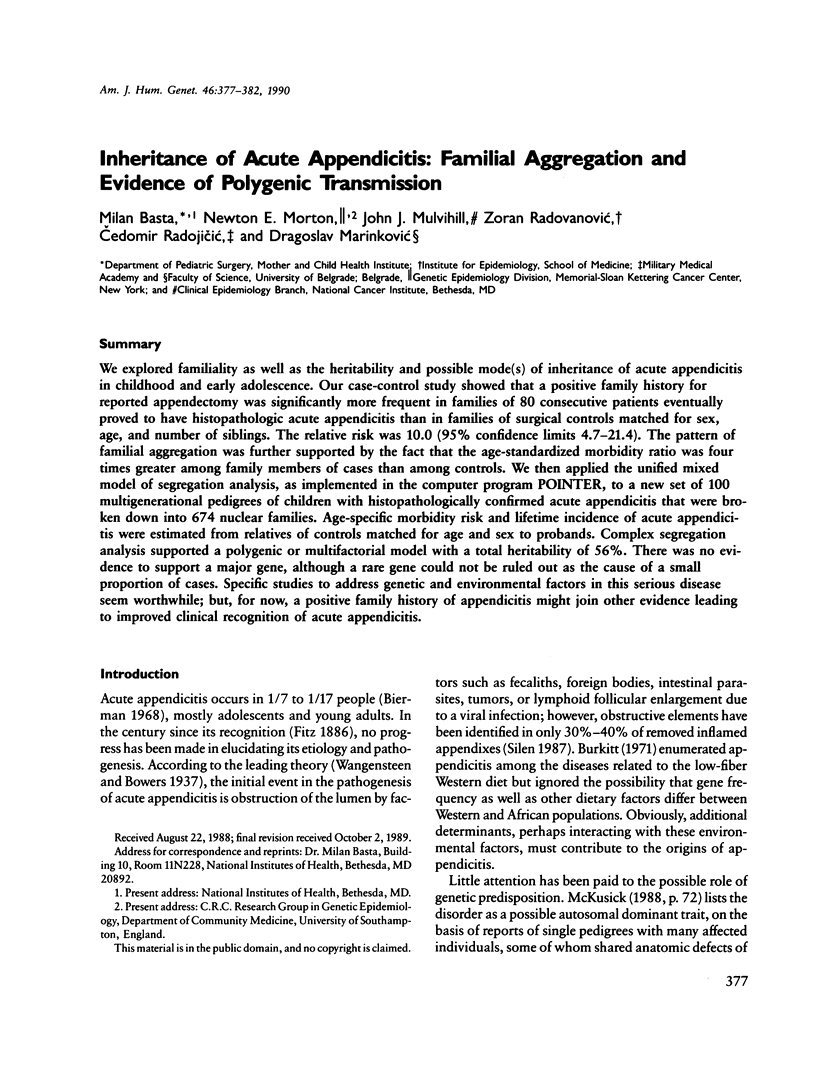
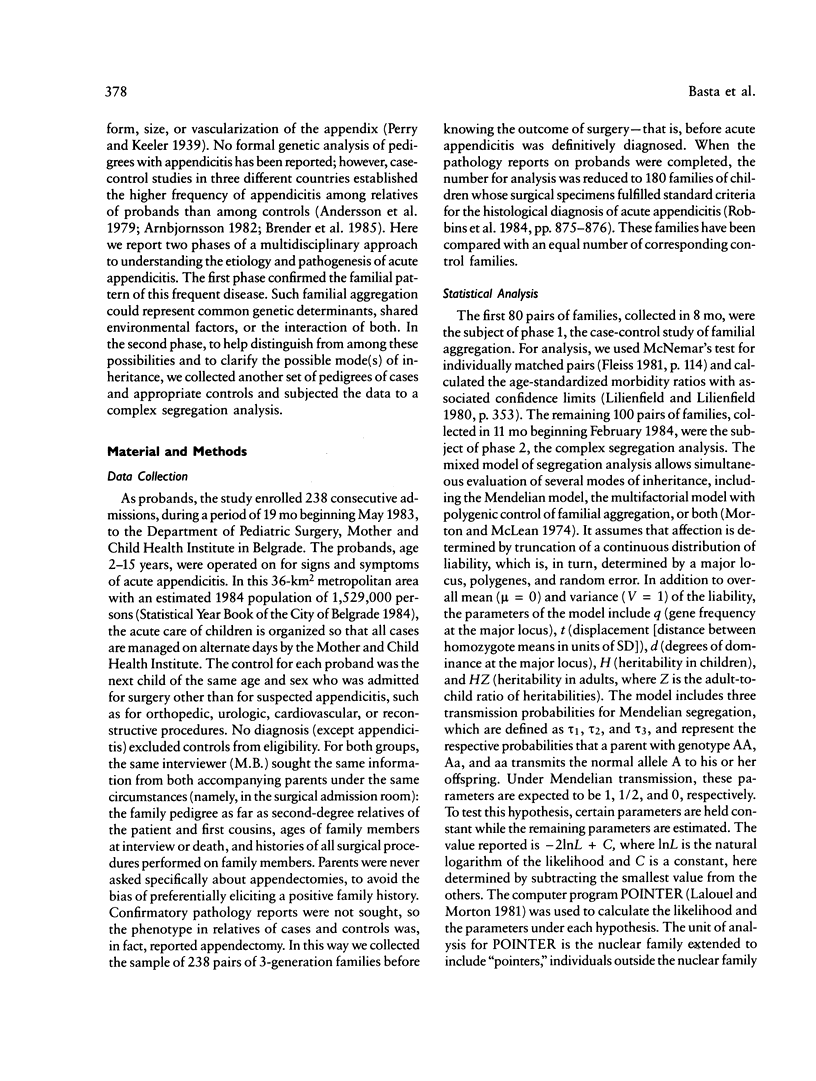
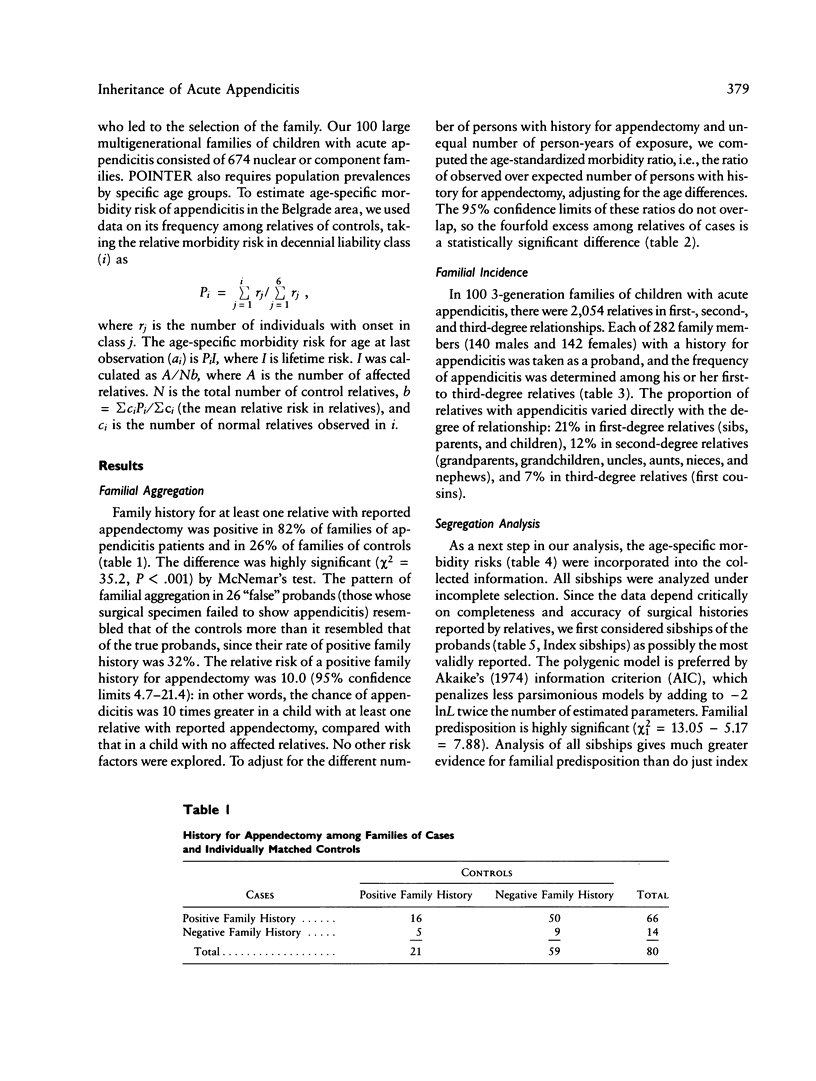

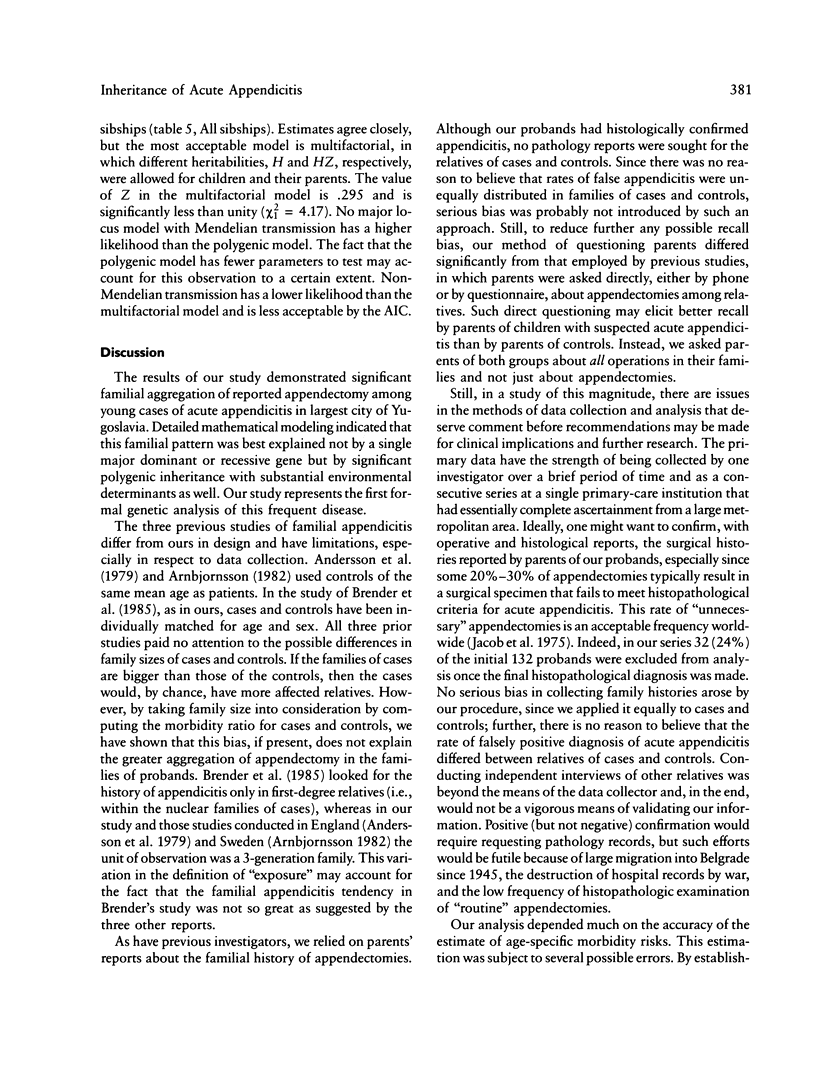
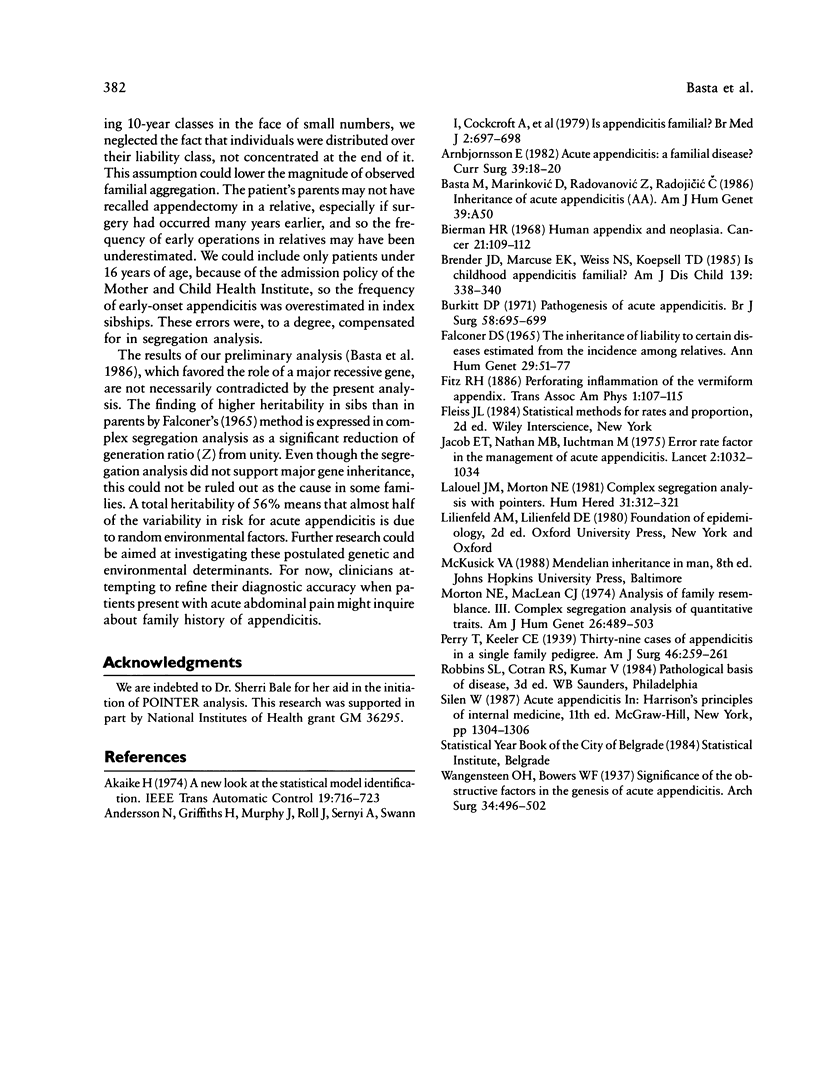
Selected References
These references are in PubMed. This may not be the complete list of references from this article.
- Andersson N., Griffiths H., Murphy J., Roll J., Serenyi A., Swann I., Cockcroft A., Myers J., St Leger A. Is appendicitis familial? Br Med J. 1979 Sep 22;2(6192):697–698. doi: 10.1136/bmj.2.6192.697. [DOI] [PMC free article] [PubMed] [Google Scholar]
- Arnbjörnsson E. Acute appendicitis: a familial disease? Curr Surg. 1982 Jan-Feb;39(1):18–20. [PubMed] [Google Scholar]
- Bierman H. R. Human appendix and neoplasia. Cancer. 1968 Jan;21(1):109–118. doi: 10.1002/1097-0142(196801)21:1<109::aid-cncr2820210117>3.0.co;2-#. [DOI] [PubMed] [Google Scholar]
- Brender J. D., Marcuse E. K., Weiss N. S., Koepsell T. D. Is childhood appendicitis familial? Am J Dis Child. 1985 Apr;139(4):338–340. doi: 10.1001/archpedi.1985.02140060020016. [DOI] [PubMed] [Google Scholar]
- Burkitt D. P. The aetiology of appendicitis. Br J Surg. 1971 Sep;58(9):695–699. doi: 10.1002/bjs.1800580916. [DOI] [PubMed] [Google Scholar]
- Jacob E. T., Bar-Nathan N., Iuchtman M. Letter: Error-rate factor in the management of appendicitis. Lancet. 1975 Nov 22;2(7943):1032–1032. doi: 10.1016/s0140-6736(75)90307-4. [DOI] [PubMed] [Google Scholar]
- Lalouel J. M., Morton N. E. Complex segregation analysis with pointers. Hum Hered. 1981;31(5):312–321. doi: 10.1159/000153231. [DOI] [PubMed] [Google Scholar]
- Morton N. E., MacLean C. J. Analysis of family resemblance. 3. Complex segregation of quantitative traits. Am J Hum Genet. 1974 Jul;26(4):489–503. [PMC free article] [PubMed] [Google Scholar]


